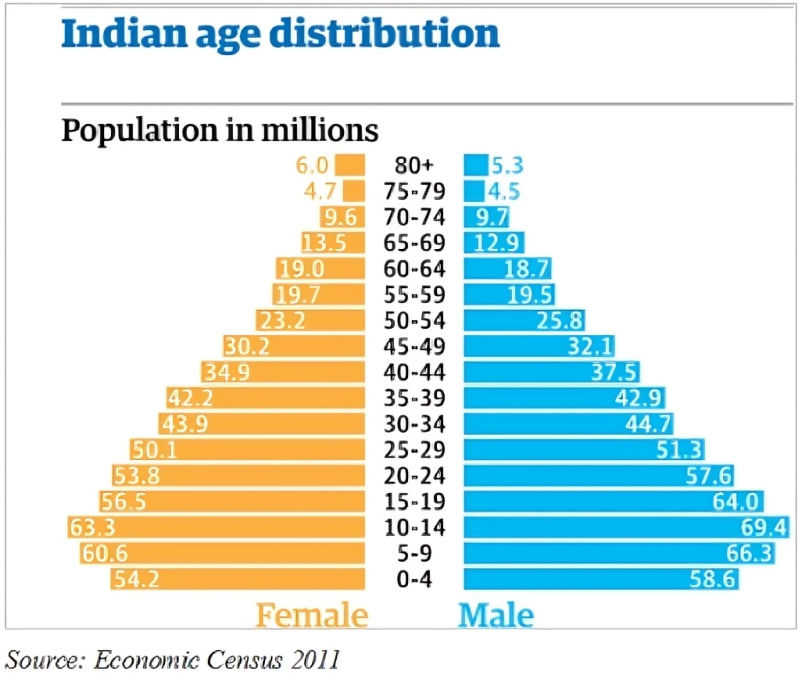Free Courses Sale ends Soon, Get It Now


Free Courses Sale ends Soon, Get It Now



Copyright infringement not intended
Picture Courtesy: https://www.e-ir.info/2022/07/10/demographic-effects-on-fiscal-balances-in-india/
Context: The recently published article "Cashing in on India’s demographic dividend" by Richard Mahapatra highlights India's demographic scenario, particularly focusing on the challenges and opportunities associated with the demographic dividend.
Key Highlights of the Article
Understanding Demographic Dividend
|
Advantages of Demographic Dividend ●Increased labour force participation leads to higher productivity. ●Creation of fiscal space for investments in infrastructure and development. ●Rise in women's workforce participation due to declining fertility rates. ●Increase in savings rate, contributing to economic growth. ●Shift towards a middle-class society, fostering aspirational growth. |

Opportunities and Challenges
|
Challenges Associated with Demographic Dividend ●The demographic dividend's benefits may be concentrated in specific regions, requiring equitable employment opportunities for realisation. ●Most new jobs will require high skills, posing a challenge due to the inadequacy of skilled labour in India. ●India's low rankings in human development indices highlight the need for substantial improvements in education and healthcare to enhance workforce efficiency. ●The informal nature of India's economy complicates efforts to fully utilise the demographic dividend. ●Future economic growth may not translate into sufficient job creation, leading to concerns about jobless growth and underemployment. |
Youth Unemployment Statistics
Skills and Education Gap
Migration and Economic Impact
Policy Recommendations
Global Perspective
Conclusion
Must Read Articles:
Source:
|
PRACTICE QUESTION Q. Automation and artificial intelligence are disrupting the job market. How can India ensure its growing workforce remains employable in the face of potential "jobless growth"? Discuss potential strategies to navigate the challenges posed by technological advancements while maximising the benefits of the demographic dividend. |
© 2024 iasgyan. All right reserved